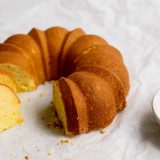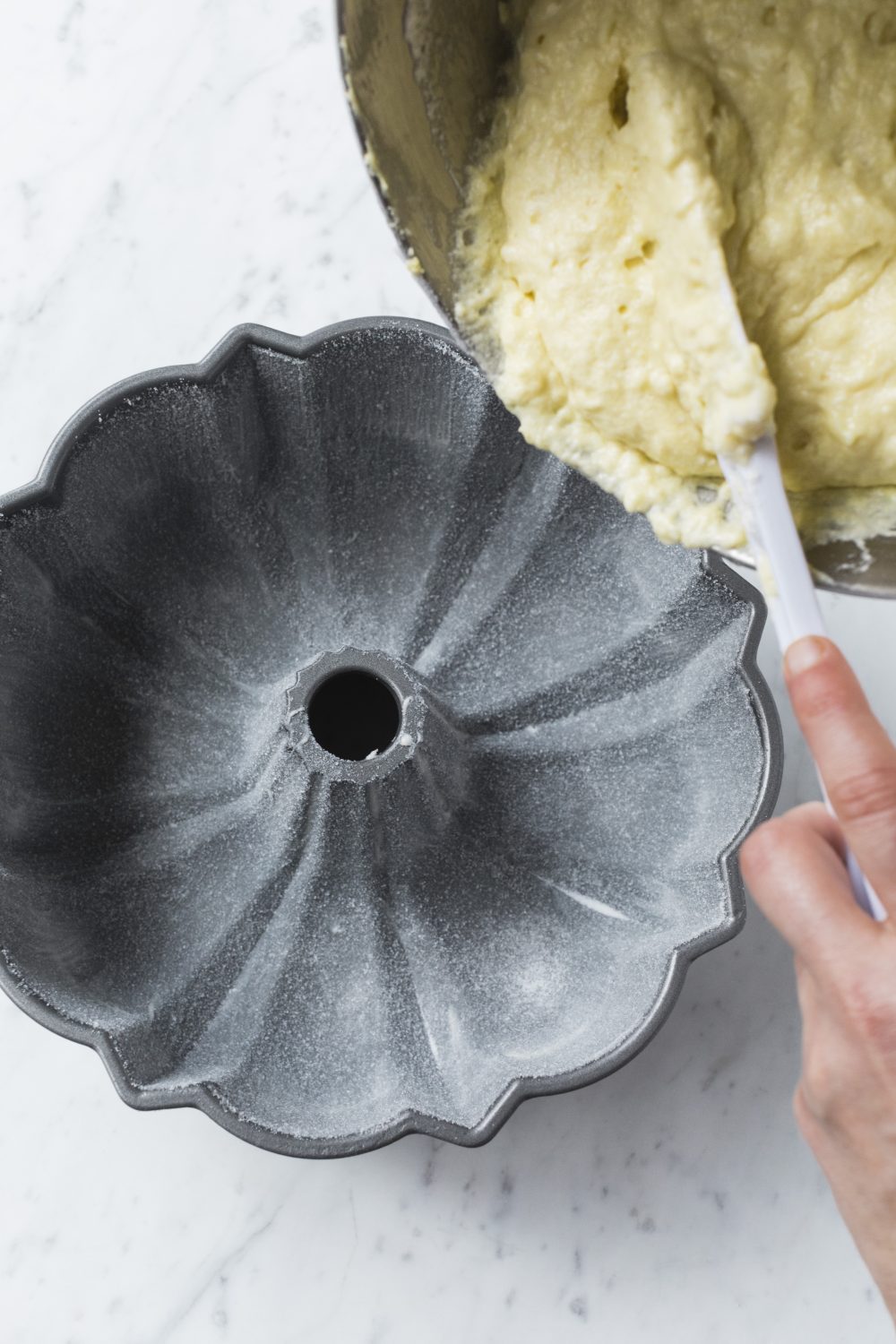When baking a cake, you’re used to buttering and flouring the pan. Coat the cake pan with butter, and then sift flour onto the greased pan, knocking the pan with your wrist to remove excess flour and make sure the pan is coated evenly. It’s a necessary step, but we’ve got a better idea.
With cakes that have a high sugar content, we recommend adding just a little more sugar to the mix.
Use your fingers to coat the inside of the pan with softened butter and then, instead of adding flour, add a tablespoon or two of sugar to the pan. Shake and turn the pan until the sugar coats the butter and then pour out any excess.
We use this tip in our Lemon-Buttermilk Pound Cake, a lofty cake made lighter than your average pound cake by separating the eggs. The sugar crust brings the pound cake to the next level.
We love this swap for two reasons. One, it will produce a release on those cakes with high sugar content, so you can forget about worrying that your cake will stick to the pan. (We’ve all been there. One layer slides out perfectly and the next breaks apart midway through removing it, leaving you to rummage around your pantry in hopes that you have a boxed cake mix you can bake up before showtime.)
The sugar coating also gives the sides and bottom of the cake a pleasant sugary crunch—a little something extra that will make your cakes taste like they came from some high-end bakery.
Try this technique in some of our favorite cake recipes, including:
Sticky Toffee Pudding Cake
French Apple Cake
Dutch Butter Cake (Boterkoek)
For another one of our favorite baking tips from Clair Ptak of London's Violet Cake’s (hint: you’ve been whipping your egg whites all wrong!), head right this way.





